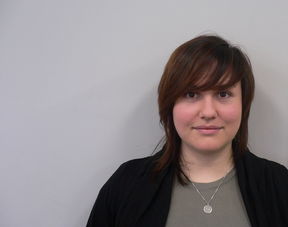Discovering new materials in data

“Our work is all about the link between a material’s structure and how it functions. We use AI to understand that link better” explains Dr. Milica Todorović, an FCAI member who uses AI in her materials science research. She is interested in improving materials and devices that can help tackle global challenges like climate change and sustainability. How materials are structured in terms of how their atoms are bonded to each other, and how the devices are structured affects how well they function in the task we want them for.
“Computer simulations complement experiments in different ways” Milica explains “One way is that we can speed up experiments by pre-screening potential materials, ruling out ones that won’t work. Another way is that we can use simulations to give insights about the microscopic structures and processes behind an experimental result. AI gives us the ability to make both of these things even faster”
A prime example is simulating optical spectra of molecules, which are important for many key technologies, but specifically ones where materials interact with light, like low energy light bulbs or solar panels. To calculate optical spectra using quantum mechanics calculations, you need a very powerful computer and a lot of computing time. To speed things up, you can train an AI on lots of structures and their precomputed spectra. Training the AI also needs a very powerful computer, but once the AI model is up and running it can make a good estimate of the spectra for whatever new molecular structure you give it in milliseconds.
AI can also help with some of the many complex optimization problems that materials scientists need to solve. Developing new materials for specific applications requires the fine tuning of many interconnected parameters. “If you think about the materials in a solar panel,” explains Milica, “then you need to optimise for the best materials to use, the thicknesses and the arrangement of the layers. The final optimization space can be very large, and AI can be very effective at quickly resolving this for us.”
The key to all this research is the data. “Materials science really benefited 15-20 years ago when the push to make music and video streaming widely available suddenly made transferring and storing huge amounts of data relatively affordable; before then researchers were building vast stores of data and keeping them separate from each other, but now they could be combined.” The ability for researchers to combine this wealth of data with the AI expertise from the computer science department has been one of the great advantages of working with FCAI.
Milica’s career began at UCL in London, where her Master’s project on simulating materials led to her PhD at Oxford, before moving to Japan for a postdoc working on supercomputers for material simulation. “I got into AI when I arrived at Aalto” Milica explains.
“Computer science here was very strong, and even before FCAI started there was a culture of CS researchers talking to people outside their field to set up collaborations, which is quite rare. In materials science there was a lot of data and a need for machine learning to help process them, but there wasn’t a lot of expertise because, previously, the knowledge transfer hadn’t been there. At Aalto, and especially after FCAI started, we’ve been able to collaborate and combine expertise, not only in research, but in teaching as well.” Milica teaches the “Machine Learning for Materials Science” MSc course, which has expanded rapidly since its foundation, with students from across the science and engineering courses at Aalto and University of Helsinki signing up.
By combining knowledge, data and intuition together from across engineering, physics and computer science, Milica’s work brings AI and materials research together to help solve complex and multidisciplinary problems.
Further information:
- Published:
- Updated:
Read more news

Success of BATCircle2.0 bolsters Finnish leadership in Li-ion battery supply chain
The Aalto-led collaboration between researchers and industry resulted in impressive research outputs
Maintenance break in ACRIS on 30th of September, 2024
Maintenance break in ACRIS on September from 10:00 to 16:00.
Aalto students' public art projects featured at award-winning ANTI-Festival
Last week in Kuopio, a fascinating collection of public art projects was presented by students from Aalto University's Department of Art and Media.